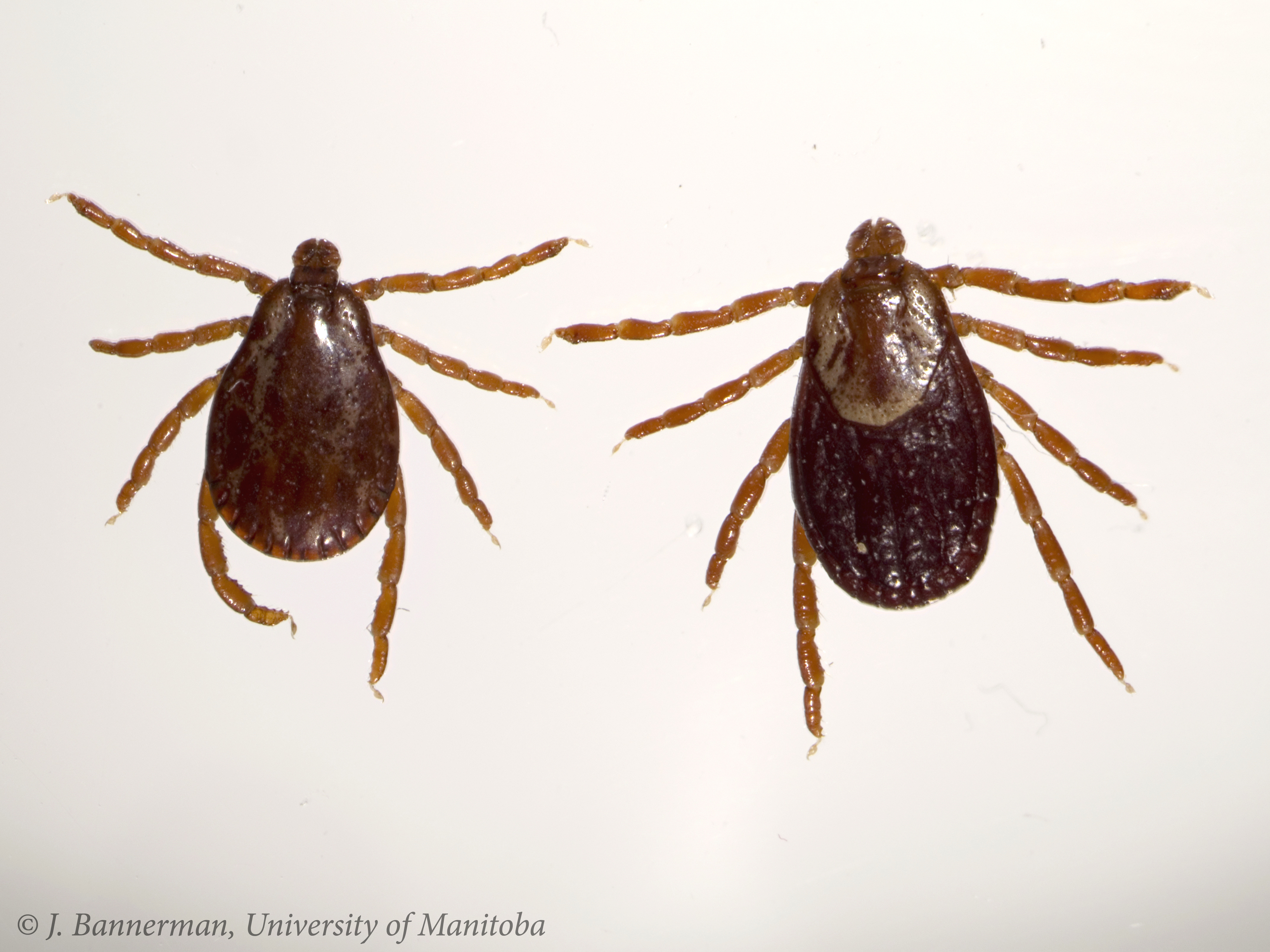Tick Identification
Tick Identification


Although it takes a trained individual to see the minute distinctions between some tick species, separating the more common American dog tick (also known as the wood tick, Dermacentor variabilis) from the blacklegged tick (also known as the deer tick, Ixodes scapularis) is easily done with the naked eye.
The most obvious distinction is the size. American dog ticks tend to be larger than the blacklegged ticks, although size may vary among individuals and can change dramatically after a long feeding period. Unfed adult American dog ticks range from 4 to 6 mm while unfed adult blacklegged ticks range from 3 to 5 mm in length. Female ticks are usually slightly larger than male ticks.
Another distinction is the colouring. The dorsal surface of ticks is covered by a hard shield called scutum. The backs of male ticks are completely covered by the scutum while the backs of female ticks are only partially covered with the scutum; this allows them to expand when they feed on blood. The scutum of the American dog tick has ornate white markings spanning it. The blacklegged tick lacks these markings and has a dark chocolate coloured scutum and legs.
The photos on the left depict a pair of American dog ticks (top) and blacklegged ticks (bottom). Males are on the left of the females for each species.